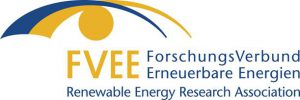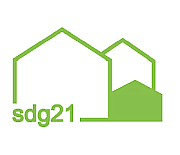
The successful implementation of the energy transition requires a variety of technologies that solve different tasks in the energy system. Missing components must be added and optimisation processes implemented. Technological innovations, supported by social innovations, play a central role here. Several projects are now systematically analysing the potential of individual energy technologies and the need for innovation.
The Renewable Energy Research Alliance (FVEE) will present the initial results of these structured technology assessments at its conference in Berlin on 8 and 9 November 2017. The scientists will also present the latest research findings on wind energy, photovoltaics, bioenergy and sustainable heat as well as sector coupling, storage technologies and sustainable mobility.
Innovations for the global energy transition
Over the past decades, a wide range of technical and social solutions have been developed, which now need to be implemented in a coherent way to achieve global and national goals. Despite the progress made in recent years, existing technologies must become more efficient and cost-effective. Completely new solutions even need to be developed for some problems. The reorganisation of energy systems is creating a huge future market. German companies need innovative products if they are to compete successfully and realise their potential. Research and development provide the basis for these necessary innovations.
Impetus for the development of the new energy research programme
The German government is currently preparing the 7th Energy Research Programme in a broad consultation process, which should be in line with the overarching political objectives. This requires a systematic reassessment of the various technologies and their potential contribution to the energy transition. The strategic flagship project "Trends and Perspectives in Energy Research" initiated by the Federal Ministry for Economic Affairs and Energy (BMWi) is providing key input. The lead project is divided into two sub-projects, which will present their key findings at the conference.
Multi-criteria evaluation of over 30 technology fields
In the "Technologies for the Energy Transition" sub-project, a consortium led by the Wuppertal Institute is assessing the research and development needs for the key technologies that are currently and will be required in the future as part of the energy transition. Using a bottom-up approach, the project analyses the technologies and lines of development available today and identifies necessary technical or economic improvements. The analytical framework comprises over 30 fields of technology from the areas of renewable energies, grids, storage, sector coupling (Power to X) and energy and resource efficiency. The researchers evaluate all fields of technology according to twelve assessment criteria and ask, among other things, about the contribution of the respective technology to climate policy and the energy industry, the positioning of German companies in the international environment and key aspects of system compatibility. The criteria include, in particular, the economic application potential, the greenhouse gas reduction effect, social acceptance and the status of research and development in an international comparison.
Methodology for prioritising energy research topics
In the parallel sub-project "Development and application of methods for prioritising topics and measures in energy research in the context of the energy transition", a top-down approach is being pursued under the leadership of the Research Centre for Energy Economics. This project analyses the technical, economic, political and social framework conditions of the energy industry. The researchers identify challenges to achieving the energy and climate targets and derive the need for action for future energy research. They are drawing up profiles of measures that also formulate recommendations for new funding formats for energy research.
Copernicus projects
In addition to the BMWi's flagship project, the annual conference will take a look at the four Kopernikus projects of the Federal Ministry of Education and Research (BMBF), large interdisciplinary collaborative projects in which civil society is involved alongside the scientific community. ENSURE focuses on the redesign and stabilisation of the electricity grid through decentralised generators in urban-rural units. Innovative technologies for electricity transmission are just as much a focus as information and communication technologies, which should ensure the balancing and stability of the electricity grid in the future. Among other things, P2X is working on the development of new, precious metal-free catalysts for the production of synthetic fuels. SynErgie is investigating the potential for demand-side management in the industrial sector. ENavi aims to identify the technical, organisational and social framework conditions that have a decisive influence on the success of the energy transition.
Further materials
Programme of the FVEE Annual Conference:
www.fvee.de
Website of the sub-project "Technologies for the energy transition":
https://wupperinst.org/p/wi/p/s/pd/626/
About the Research Association for Renewable Energies
The Renewable Energies Research Alliance is a nationwide cooperation of research institutions. The members research and develop technologies for renewable energies, energy efficiency, energy storage and the optimised technical and socio-economic interaction of all system components. The common goal is to transform the energy supply into a sustainable energy system.
The member organisations of the FVEE
- DBFZ German Biomass Research Centre
- DLR German Aerospace Centre
- Fraunhofer ISE Fraunhofer Institute for Solar Energy Systems
- Fraunhofer IWES Fraunhofer Institute for Wind Energy and Energy System Technology
- GFZ Helmholtz Centre Potsdam German Research Centre for Geosciences
- HZB Helmholtz Centre Berlin for Materials and Energy
- ISFH Institute for Solar Energy Research Hameln Emmerthal
- IZES Institute for Future Energy Systems
- Jülich Research Centre
- KIT Karlsruhe Institute of Technology
- UFZ Helmholtz Centre for Environmental Research
- Wuppertal Institute for climate, energy, environment
- ZAE Bavaria Bavarian Centre for Applied Energy Research
- ZSW Centre for Solar Energy and Hydrogen Research
Keywords:
Stakeholders, DE-News, Energy storage, Renewable, Climate protection, New books and studies, PV, PlusEnergy house/settlement, SDG 2030, Solar thermal, Environmental policy
 The new section "Historic settlements and neighbourhoods before 1980" is under construction:
The new section "Historic settlements and neighbourhoods before 1980" is under construction:




